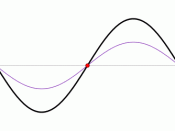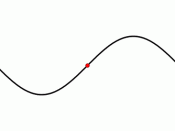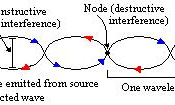abstract the objective of this study is to determine the speed of the propagating wave in the wire and then using the obtained values show how different tensions of the wire affect the speed of this wave. For this purpose the experimental setup consisting of a wire fixed at one end and with a movable fixed point at the other end, a mass bar hanging over a pulley, a magnet placed at the fixed end, and a function generator (Agilent 33120A, 15MHz Function/Arbitrary Waveform Generator) connected to the wire was used. The results obtained after fitting the experimental values with theoretical curve show the trend in increase of the velocity of the propagating wave with increase of the wire tension.
1.âÂÂintroduction the phenomenon of the resonance appears in many different parts of physics. In this report it is represented by the example of standing waves. The physical system that is studied here is a wire held fixed at its both ends.
Generated transverse waves traveling along the wire are reflected from each end. As the waves bounce back and forth from end to end, the interference of the waves with each other is usually destructive. But at certain frequencies each reflected wave interferes constructively with the incoming wave and they build up into a standing wave. At this time the phenomenon of the resonance can be observed in the form of a standing wave [1].
The goal of this study was to determine the velocities of the propagating waves in a wire searching for the resonant frequencies in the wire, and then using the obtained values show how different tensions of the wire affect the speed of this wave.
2.âÂÂtheory the resonances at which a strong standing wave appears occur when,(1)where l represents the length of the wire, is...


